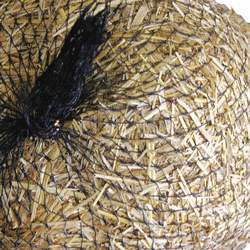
Services

Hydro-seeding
Hydro-seeding is a process of combining nutrient enriched mulch, water, and
native plant or grass seed to create a mixture that is then applied to an area
where vegetation is desired. Hydro-seeding is a form of installing vegetation
that is extremely cost efficient and effective. Application is versatile because it
is in liquid form, and thus can be applied through a machine sprayer on
hillsides, embankments, and other areas that would otherwise be difficult to
promote vegetative germination.
Other additives may be needed such as tackifier which causes the mulch to
bond to a hillside thus preventing mulch runoff. Turfgrass, native grass, and/or
wildflowers can all be hydro-seeded. Typically hydro-seeding is used for the
long-term or permanent installation of turf ground cover. Application scenarios
include parks, golf courses, schools, home yards, and construction sites where
long-term vegetative growth is recommended.
However, if sediment and erosion stabilization is desired without the use of a
more permanent method of control, other solutions for ground coverage are
possible. In the case that a slope or hillside need be completely shielded from
rainfall, a hydro-mulch mixture could be combined with specially designed
tackifiers in order to create a Soil Stabilizing Emulsion or a Bonded Fiber
Matrix (BFM). When applied correctly, these variations of hydro-mulch
create a thick crust over the surface of the soil and significantly decrease the
permeability of the soil.

Straw-blowing
Small-grained straw is applied to the soil surface or exposed slope with a
mechanical blower, laying a macro-matrix of straw ranging in depth from three
to eight inches. This matrix is held in place by a secondary application of a
tackifier/hydromulch that is sprayed onto the surface of the straw using a
hydro-mulching machine.
This application scenario is called the 2-step process and is used to prevent
soil erosion and sedimentation caused by rainfall during the rainy season. The
2-step erosion control method is an economical treatment for protecting
construction sites from rain events. This method is used to sloped and/or flat
surfaces that require short-term soil protection. For hillsides or slopes that
require long-term erosion control protection, a 3-step process is needed.

3-Step
The 3-Step Method utilizes three separate material applications. First, a layer
of hydro-mulch slurry containing native or turf seed with fertilizer is evenly
distributed along the slope or hillside. The second step is a shield layer of
mechanically blown straw, applied to protect the hydro-mulch slurry and soil
surface. The third and final step involves an application of tackifier in order to
hold the straw in place.
The 3-Step Method is used to establish erosion control protection where
immediate and long-term soil stabilization is needed. This application method is
designed for building sites disturbed during or prior to construction that require
sedimentation/erosion control protection for long periods of time.

Wattles, fiber-mats, sandbags, and silt screens
Fiber-rolls (wattles) and mats are used frequently in controlling the amount silt
and/or water runoff allowed to escape an embankment. These rolls and mats,
generally made of organic material such as straw, are placed on hillsides and
are typically left until completely biodegraded. The functionality of these
products is the filtration of highly turbid water and the protection from land
erosion.
Fiber-rolls and/or silt screens can also be placed around drains and inlets in
order to filter sediment out of water, thus allowing only sediment free water to
enter the water way. Generally silt screens and/or sandbags will be required to
be placed around inlets and drains before the soil on a construction site is
disturbed. Wattles and fiber-mats are a great construction site alternative to
hydro-mulching or seeding where more permanent methods of erosion control
are not desired.